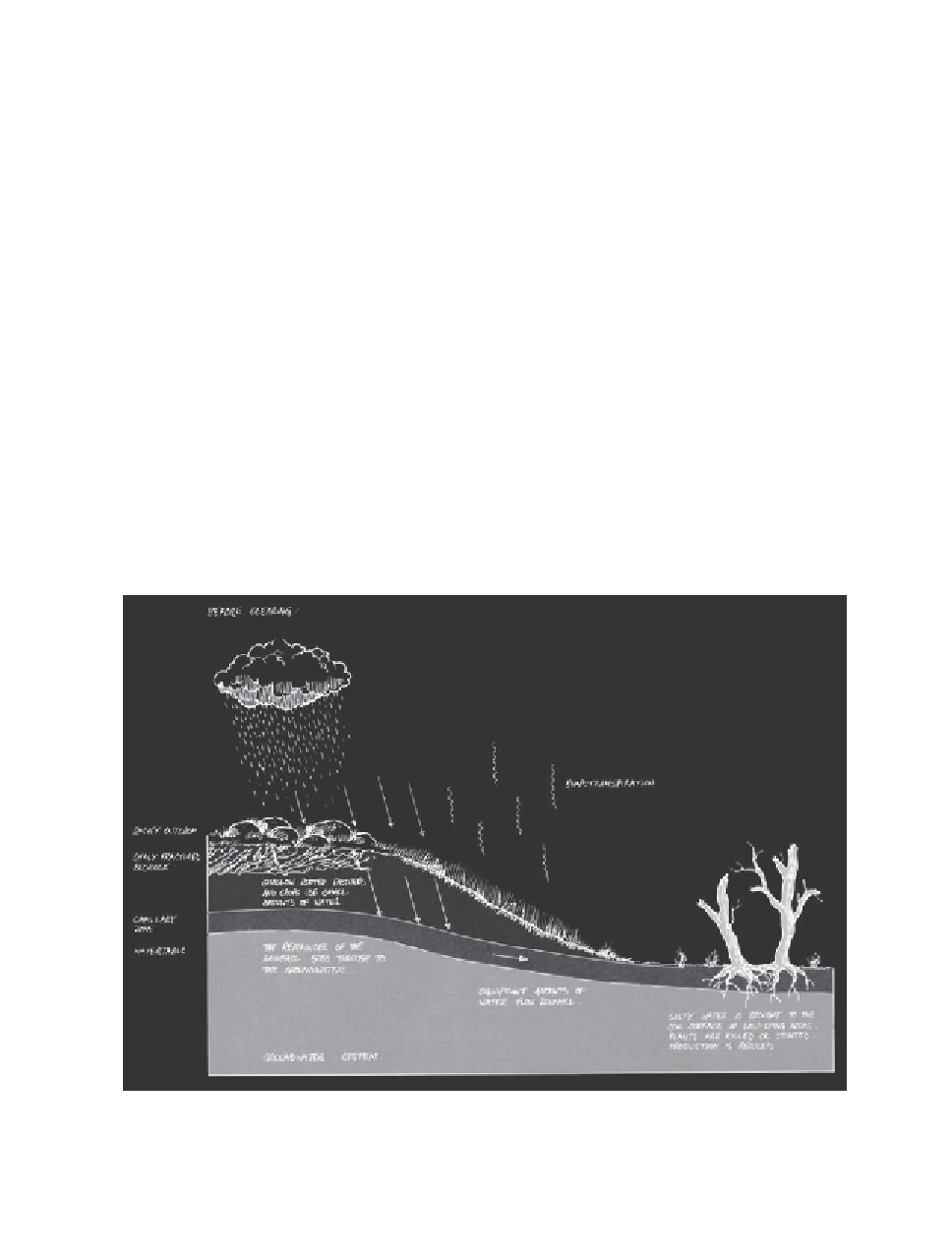Geoscience Reference
In-Depth Information
gives important information to add to other data when planning remedial work.
Usually areas that have a high infiltration rate are sown to plants that have a high
water use, such as trees or deep-rooted perennial pastures. Figure 43 shows water
movement in soil that has been cleared of tree cover.
To investigate a soil problem
If waterlogging is a problem, then the first step in dealing with it is to find the
cause and evaluate how bad the problem is. It will be obvious when looking at a
waterlogged crop the effect it is having and the area concerned, but it is not so
obvious what is causing the problem.
The cause may be loss of soil structure from too much cultivation or over
cropping, or hardpans from stock or machinery pressure on the soil.
It may also be due to chemical imbalances in the soil such as too much sodium.
This causes the soil to slump when wet, which reduces water infiltration. The
infiltration test will help show where in the soil profile water movement is
restricted, which will help in planning remedial measures.
Figure 43
Changes in the hydrological cycle following the clearing of native vegetation. (
Soil Sense
P-04).

Search WWH ::

Custom Search